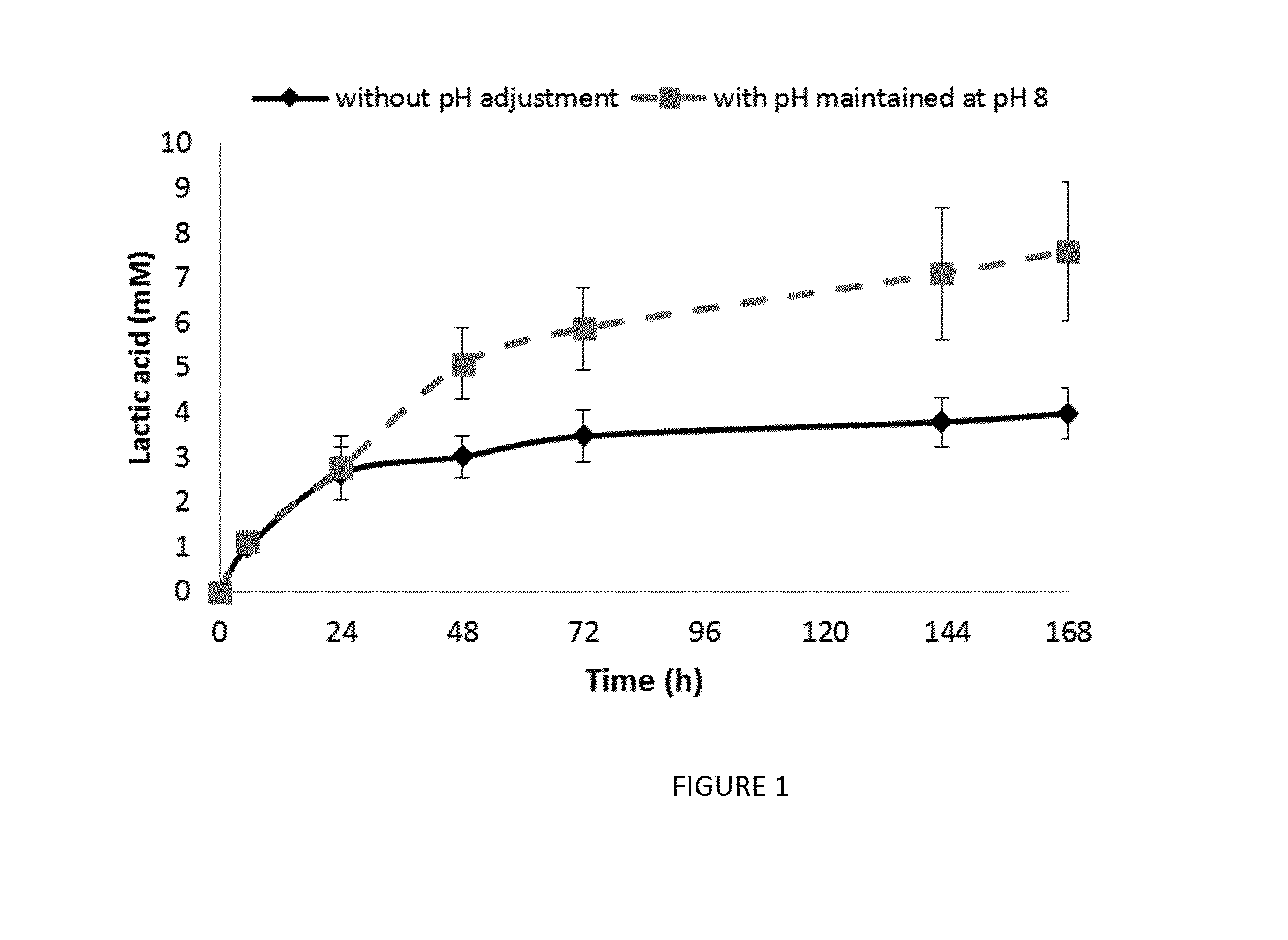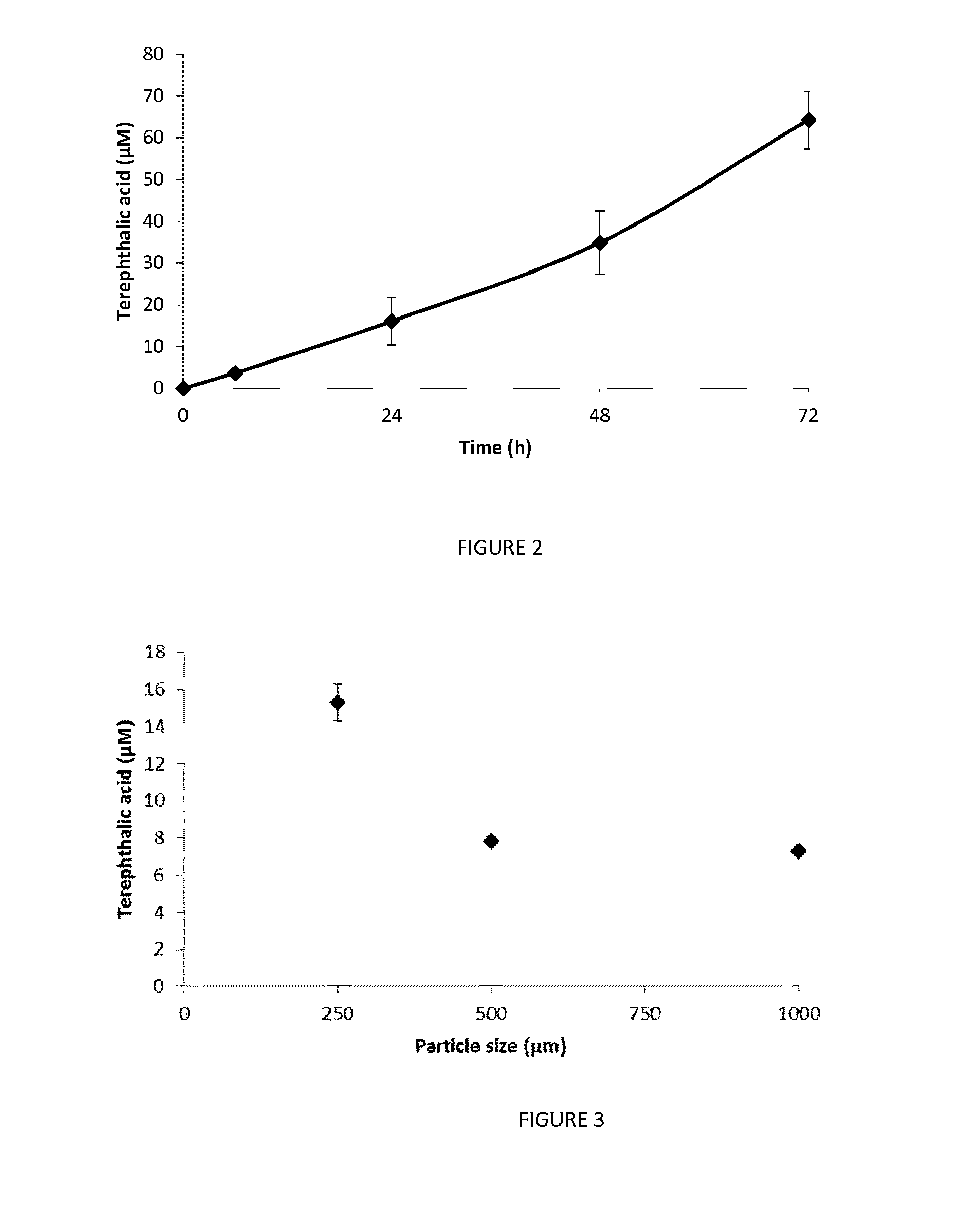Method for recycling plastic products
a plastic product and recycling technology, applied in plastic recycling, plastic recovery, recycling and other directions, can solve the problems of increasing environmental problems, high prices which may be non-competitive compared to virgin plastic, and the recycling process has only been performed on purified polymers, and achieves low energy consumption
- Summary
- Abstract
- Description
- Claims
- Application Information
AI Technical Summary
Benefits of technology
Problems solved by technology
Method used
Image
Examples
examples
A] Aliphatic Polyester Recycling with an Enzyme
[0082]Plastic products containing aliphatic polyester such as PLA can be recycled thanks to the process of the invention. The present experiment shows the recovery of lactic acid by treating plastic product constituted of semi-cristallinePLA with proteinase K.
Plastic Product and Pre-Treatment
[0083]PLA pellets were purchased from NaturePlast (PLLA 001) and were grounded into powder with a particle size inferior to 500 μm using a universal mill Condux CUM 100.
[0084]Differential Scanning Calorimetry (DSC) tests were used in order to determine glass temperature (Tg) and crystallinity of polymers in plastic products, using a Q 100 TA-RCS 90 Instrument under nitrogen atmosphere (50 mL / min) at a scanning rate of 10° C. / min from −50° C. to 300° C. in aluminium pans on around 8 mg samples.
[0085]PLA powder had a Tg of 59° C. and was semi-crystalline with 14.9% of crystallinity.
Hydrolysis Reaction
[0086]The hydrolysis of the PLA powder was performe...
PUM
| Property | Measurement | Unit |
|---|---|---|
| Temperature | aaaaa | aaaaa |
| Temperature | aaaaa | aaaaa |
| Temperature | aaaaa | aaaaa |
Abstract
Description
Claims
Application Information
 Login to View More
Login to View More - R&D
- Intellectual Property
- Life Sciences
- Materials
- Tech Scout
- Unparalleled Data Quality
- Higher Quality Content
- 60% Fewer Hallucinations
Browse by: Latest US Patents, China's latest patents, Technical Efficacy Thesaurus, Application Domain, Technology Topic, Popular Technical Reports.
© 2025 PatSnap. All rights reserved.Legal|Privacy policy|Modern Slavery Act Transparency Statement|Sitemap|About US| Contact US: help@patsnap.com



